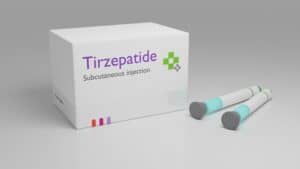
Which Is Better Semaglutide an:d Tirzepatide?
Which Is Better: Semaglutide and Tirzepatide? Semaglutide and Tirzepatide are two medications that have gained significant attention in the field of diabetes management. Both drugs belong to the class of glucagon-like peptide-1 (GLP-1) receptor agonists, which are known for their ability to lower blood sugar levels and promote weight loss.
Choosing the right medication for diabetes management is crucial, as it can greatly impact a patient’s overall health and well-being.
Mechanisms of Action
Semaglutide and Tirzepatide work by mimicking the action of GLP-1, a hormone that is naturally produced in the body. GLP-1 helps regulate blood sugar levels by stimulating the release of insulin and suppressing the release of glucagon, a hormone that raises blood sugar levels. Additionally, GLP-1 slows down the emptying of the stomach, leading to increased feelings of fullness and reduced appetite.
Semaglutide is a long-acting GLP-1 receptor agonist that is administered once weekly. It binds to the GLP-1 receptor and activates it, resulting in increased insulin secretion, decreased glucagon secretion, and delayed gastric emptying. This leads to improved glycemic control and weight loss.
Tirzepatide, on the other hand, is a dual glucose-dependent insulinotropic polypeptide (GIP) and GLP-1 receptor agonist. It stimulates both the GIP and GLP-1 receptors, resulting in increased insulin secretion and decreased glucagon secretion. This dual mechanism of action makes Tirzepatide a potent medication for lowering blood sugar levels and promoting weight loss.
Clinical Trials and Efficacy

The Science Behind Semaglutide
Which Is Better: Semaglutide and Tirzepatide? Clinical trials have shown that both Semaglutide and Tirzepatide are highly effective in lowering blood sugar levels and promoting weight loss in patients with type 2 diabetes.
In a clinical trial called SUSTAIN-6, Semaglutide was compared to placebo in over 3,000 patients with type 2 diabetes. The study found that Semaglutide significantly reduced HbA1c levels (a measure of long-term blood sugar control) and body weight compared to placebo. Additionally, Semaglutide was associated with a lower risk of cardiovascular events, such as heart attack and stroke.
Tirzepatide has also shown promising results in clinical trials. In a study called SURPASS-1, Tirzepatide was compared to Semaglutide in over 1,800 patients with type 2 diabetes. The study found that Tirzepatide was superior to Semaglutide in reducing HbA1c levels and body weight. Additionally, Tirzepatide was associated with a lower risk of hypoglycemia (low blood sugar) compared to Semaglutide.
Safety Profile
Both Semaglutide and Tirzepatide have a favorable safety profile, but they do have some differences in terms of side effects and adverse reactions.
Common side effects of Semaglutide include nausea, vomiting, diarrhea, and constipation. These side effects are usually mild and transient, and they tend to improve over time. Less common side effects include pancreatitis (inflammation of the pancreas) and gallbladder disease.
Tirzepatide also has similar side effects to Semaglutide, including nausea, vomiting, diarrhea, and constipation. However, the incidence of these side effects is generally lower with Tirzepatide compared to Semaglutide. Additionally, Tirzepatide has been associated with a higher risk of injection site reactions, such as redness, swelling, and itching at the injection site.
Dosage and Administration

Tirzepatide For Effective Weight Loss
Semaglutide is available as a once-weekly injection, while Tirzepatide is administered once weekly for the first four weeks, and then once every two weeks thereafter. Both medications are self-administered using a prefilled pen device.
The recommended starting dose of Semaglutide is 0.25 mg once weekly, which can be increased to 0.5 mg once weekly after four weeks. The maintenance dose is 1 mg once weekly. On the other hand, the recommended starting dose of Tirzepatide is 5 mg once weekly, which can be increased to 10 mg once weekly after four weeks. The maintenance dose is 15 mg once every two weeks.
Cost and Insurance Coverage
The cost of Semaglutide and Tirzepatide can vary depending on factors such as insurance coverage and pharmacy discounts. However, in general, Semaglutide tends to be more expensive than Tirzepatide.
Insurance coverage for both medications can also vary, but most insurance plans cover both Semaglutide and Tirzepatide. It is important for patients to check with their insurance provider to determine their coverage and out-of-pocket costs.
Side Effects and Adverse Reactions
While both Semaglutide and Tirzepatide have a favorable safety profile, they do carry some risks of side effects and adverse reactions.
Common side effects of Semaglutide include nausea, vomiting, diarrhea, and constipation. These side effects are usually mild and transient, and they tend to improve over time. Less common side effects include pancreatitis (inflammation of the pancreas) and gallbladder disease.
Tirzepatide also has similar side effects to Semaglutide, including nausea, vomiting, diarrhea, and constipation. However, the incidence of these side effects is generally lower with Tirzepatide compared to Semaglutide. Additionally, Tirzepatide has been associated with a higher risk of injection site reactions, such as redness, swelling, and itching at the injection site.
Patient Preferences and Satisfaction
Patient preferences and satisfaction with Semaglutide and Tirzepatide can vary depending on individual needs and preferences.
Some patients may prefer Semaglutide because it is administered once weekly, which can be more convenient for those who have difficulty remembering to take daily medications. Additionally, Semaglutide has been shown to have a greater effect on weight loss compared to Tirzepatide.
On the other hand, some patients may prefer Tirzepatide because it has a lower risk of hypoglycemia compared to Semaglutide. Additionally, Tirzepatide has a more flexible dosing schedule, with injections given once weekly for the first four weeks, and then once every two weeks thereafter.
Comparison with Other GLP-1 Receptor Agonists
Semaglutide and Tirzepatide differ from other GLP-1 receptor agonists in terms of their mechanisms of action and dosing schedules.
Semaglutide is a long-acting GLP-1 receptor agonist that is administered once weekly. Other long-acting GLP-1 receptor agonists include Dulaglutide and Exenatide extended-release. These medications have similar mechanisms of action to Semaglutide but differ in terms of their dosing schedules.
Tirzepatide is a dual GIP and GLP-1 receptor agonist, which sets it apart from other GLP-1 receptor agonists. Other GLP-1 receptor agonists include Liraglutide, Lixisenatide, and Albiglutide. These medications have similar mechanisms of action to Tirzepatide but differ in terms of their dosing schedules and side effect profiles.
Conclusion of Which Is Better: Semaglutide and Tirzepatide?
In conclusion, Semaglutide and Tirzepatide are both effective medications for diabetes management. They have similar mechanisms of action but differ in terms of their dosing schedules, side effects, and cost.
Based on individual needs and preferences, patients may choose Semaglutide if they prefer a once-weekly dosing schedule and are looking for greater weight loss. On the other hand, patients may choose Tirzepatide if they prefer a more flexible dosing schedule and have a higher risk of hypoglycemia.
Ultimately, the choice between Semaglutide and Tirzepatide should be made in consultation with a healthcare provider, taking into consideration factors such as efficacy, safety, convenience, and cost.






